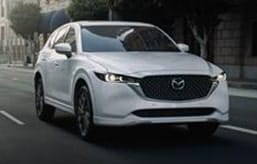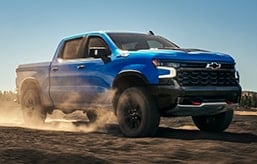- We put more than 45,000 miles on a 2021 Ford F-150 XLT PowerBoost.
- Here, we're going to break down our lifetime fuel economy, how much it cost us to run, and what the truck is worth now.
- After three years of hard use, we still love this pickup.
Ford F-150 Hybrid: What We Learned After 45,000 Miles
We reflect on our multiyear ownership experience with Ford's hybrid pickup truck
It's time to say goodbye to our long-term 2021 F-150 XLT PowerBoost hybrid. We originally bought this truck with the intention of putting it through our usual 12-month, 20,000-mile long-term test, but along the way, Big Red etched its way into our hearts. Now, the F-150's odometer is showing more than 45,000 miles, and it's finally time to bid it farewell. Here, we'll recap everything — good and bad — we learned while living with Ford's hybrid pickup.
PowerBoost hybrid lifetime fuel economy
The F-150 PowerBoost hybrid uses a 3.5-liter twin-turbo V6 engine and a 1.5-kWh lithium-ion battery. Total system output is a stout 430 horsepower and 570 lb-ft of torque, which is actually more torque than any other F-150, save for the V8-powered Raptor R.
But did the F-150 PowerBoost deliver on its EPA-estimated fuel economy of 24 mpg combined? Not quite. Our lifetime fuel economy came out to 19.9 mpg, which is a far cry from that combined figure. (The city and highway ratings are also 24 mpg, for what it's worth.) That said, all that torque from the PowerBoost powertrain makes this truck very potent — our XLT hybrid actually beat a V6-powered F-150 Raptor in an off-road drag race. If you get the hybrid setup for the extra torque and not the fuel economy claims, you won't be disappointed.
No task too tough
The XLT PowerBoost we bought can tow up to 12,700 pounds and has a 2,120-pound payload capacity. After plenty of long hauls with all sorts of trailers, praise from our staff was uniquely unanimous. Everyone who towed with the F-150 said the same thing: They could barely feel whatever was behind them.
We've also used the F-150 to haul gear everywhere. I personally used the truck to move apartments and features like the many tie-down points in the bed and the cab-mounted camera that points directly into the bed all came in extremely handy. The F-150 was a favorite for big moves and long hauls thanks to its easy-to-use tech, great powertrain and smooth ride.
A big, comfy American barge
Trucks live hard lives, and because so many of their drivers spend long hours behind the wheel, cabin comfort is a crucial aspect of the ownership experience. As we found out, our F-150 nails this aspect too. The seats are excellent for long drives or just sitting in the school pickup line, and the interior — even despite our truck being a midgrade XLT trim — has thoughtful storage solutions, a nice mix of physical and touch-sensitive controls, and a handsome design with diverse materials. Add to that a whisper-quiet ride when you're on the road matched with superb body control and the F-150 makes it super to eat up big miles. At the 45,000-mile mark, our truck's interior is showing the usual signs of wear and tear, but it still feels as solid as ever.
Major problems and cost to own
We only had one major issue with our F-150, and that concerned the infotainment screen. What started as glitches and restarting ended up being a faulty accessory protocol interface module (APIM). Once it failed completely, we were left with a center screen that would not turn on at all. Luckily, because our APIM failed in a specific way, Ford replaced it under warranty. Even though the dealership told us it would take a month to get a new one, it arrived in just one week, and we had it swapped out free of charge.
Aside from a few other small recall-related issues, our F-150 didn't spend much time at the dealership. We spent $1,500 on some new tires, $468.49 on maintenance and oil changes, and $1,886.20 to repair some damage to our truck's bed. All in, the Ford cost us $3,854.69 to keep on the road throughout our 3.5-year ownership.
What's it worth now?
We cut a check for $66,285 when we bought our F-150. That included $4,495 for the PowerBoost hybrid option and a $4,000 dealer markup (thanks, COVID-19). Today, our truck is worth $32,600 — a little less than half of what we paid 3.5 years ago.
Would we do it again? Absolutely. Our F-150 was a faithful partner that rarely let us down. No, the fuel economy wasn't what we expected, but we'd happily keep this truck in our fleet for another 45,000 miles simply because of how great it was during our long-term test.





 by
by  edited by
edited by